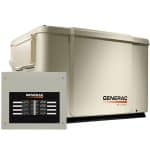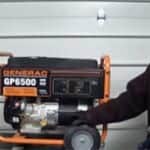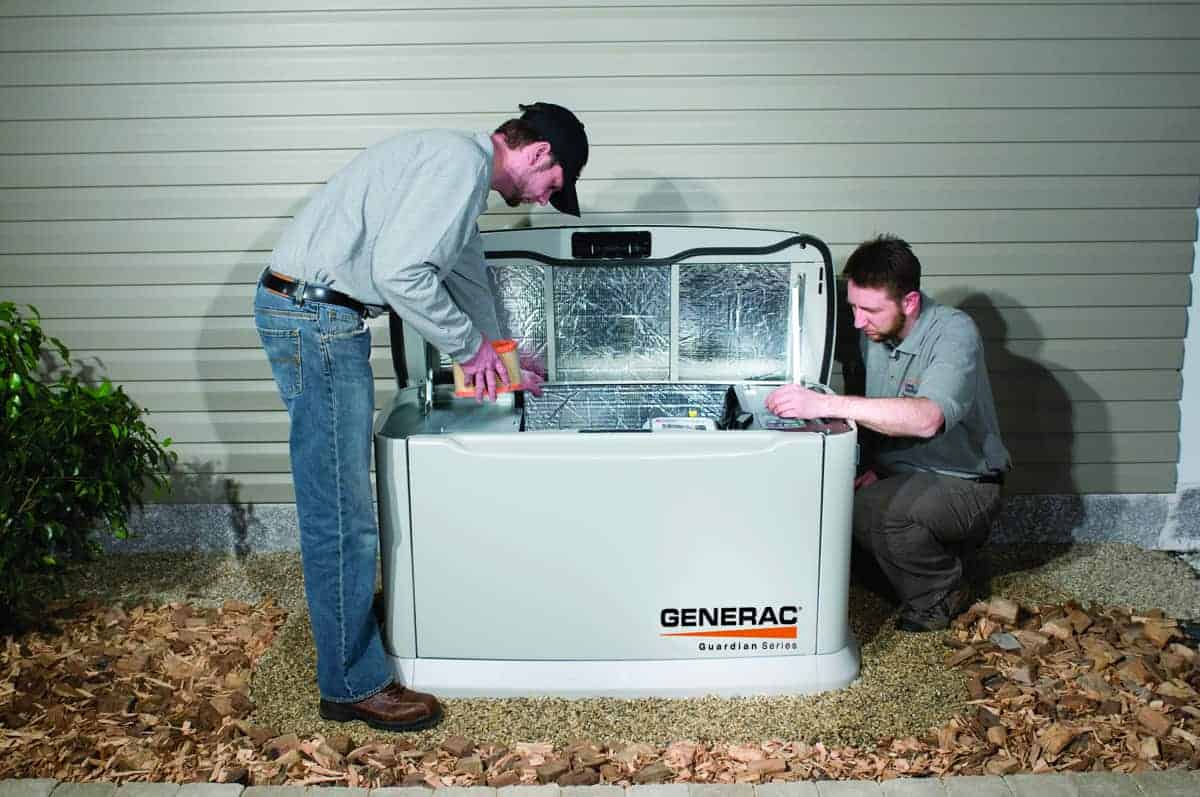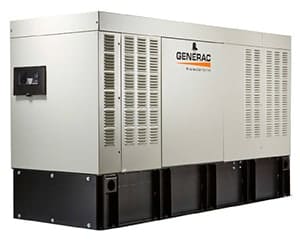Automatic No-Worry Home Backup Power or High Maintenance Portable
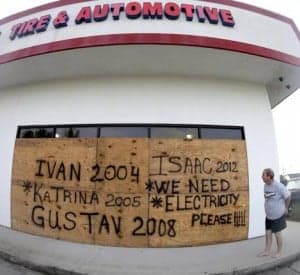
A tire store in Kenner, United States, has a banner in its window stating no power in the suburb post Isaac disaster.
Residential consumers considering a generator for backup power have two main choices—a standby generator or a portable.
The first stop at this point is an Internet search for backup generators. Choices run from one extreme to the other, with tiny units that can barely run a home computer, to liquid-cooled models capable of supplying half a block in the average suburban neighborhood.
A look at the prices and it seems that portables win the battle for cost. But prices at the home center or the online shopping mall are deceiving and there are other costs to consider, and other factors that make a big difference in value.
Comparing a standby system like the Generac 7,5kW PowerPact and a portable like the GP6500E isn’t exactly comparing apples to apples, but it’s probably as close as you can get.
Obvious Differences
The PowerPact is a 7.5-kilowatt standby generator system. It is permanently installed and operates automatically. Outages are sensed immediately and the generator starts.
Within seconds, the standby system is safely supplying electrical power to the home’s essential appliances and circuits. It runs quietly at about 67dB off the home’s existing natural or LP gas supply.
The all-weather enclosure allows for operation at any time and in any weather. Even more important—no one has to go outside in the middle of the night to drag it out, start it up, and connect it to the home or critical appliances. It runs your furnace, refrigerator and freezer, and your sump pump without any human intervention.
Generac’s GP6500E is a 6.5 kilowatt portable generator with electric start. During a power outage, it sits in the garage or storage shed until the rain stops, then you wheel it onto the driveway, fill it with gasoline, connect the power cord to the house, and start it.
The noise level compares to similar units in the industry which places it at 75 to 80dB. Every 5 to 10 hours it must be shut off, allowed to cool, and refilled with up to seven gallons of gasoline which may be hard to purchase during a power outage.
The GP6500E, like most portables, is not recommended for use in the rain or other bad weather.
Installation
If you want to power your furnace or well pump, or other permanently installed appliance, you’ll need a transfer switch. The PowerPact comes with a 50-ampere, load-center automatic transfer switch. The GP6500E requires a separately purchased manual transfer switch) to operate hard-wired appliances.
The PowerPact will install just outside your home near the utility entrance. It is designed for that purpose and meets all the necessary codes for a safe installation. The installer will connect it to your natural or propane gas supply and it will run for days or even weeks without the need to refuel.
You’ll need a secure place to keep the GP6500E until you need it, and room for about 25 gallons of gasoline to run it for approximately 32 hours at half load. For safe operation, it must be at least 10 feet from the house and you’ll need a way to secure the unit to prevent theft.
Cost
After the purchase of a manual ATS and comparable installation, the difference in cost doesn’t look very different. The portable with a good manual transfer switch will cost less out of the box. However, it can’t hook itself up and and it won’t start automatically in the pouring rain or when an ice storm has you stranded away from home.
The Generac Core Power will cost a little more out of the box and needs a natural gas or propane connection, but it starts and runs automatically to keep your pipes from freezing, the refrigerator and freezer cold, and the sump pump running. You won’t have to invest in numerous gasoline containers or store and rotate large supplies of gasoline.
Bottom Line
If you’re considering a portable for home backup power, consider all the factors and not just out-of-the-box cost. When it comes to keeping your home and family safe, even when you’re not there, the benefits of a standby generator system like the PowerPact are obvious, and the cost differences make the standby a better value.
Portables are great for power in places without utility service or when you have to rely on an external supply of power. But when it comes to a reliable source of power that keeps your home essentials operating, they can’t compete with the standby system.
Updated August 3, 2018


